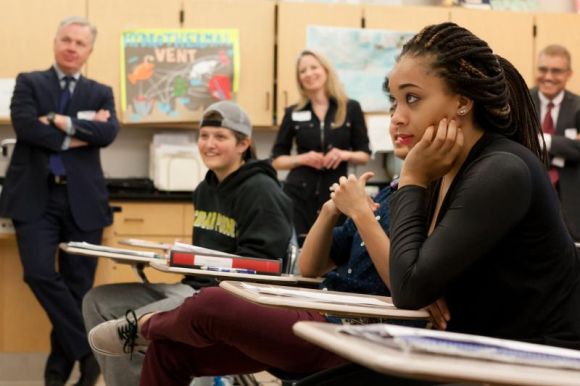One way to broaden participation in STEM at the classroom level is to focus more intentionally on the variety of ways language is used with culturally and linguistically diverse student populations. The first step is to gain a better understanding of what language differences look like within instruction and how the use of language can unintentionally create barriers or afford opportunities for students to be more engaged. One misconception, especially at the upper grade levels, is that supporting language development and using language as a tool is reserved for literature or humanities courses (Moje, 1995; Oliveira, 2010). Hudley and Mallinson (2017) and others argue that focusing on language in science and STEM is a worthwhile endeavor.
We offer a few targeted strategies that teachers can use to create a more inclusive, culturally and linguistically responsive classroom. Program sites can share these strategies with teachers during a PDI to help them find ways to integrate them into their ABE instruction. This can further build teachers’ capacity to support a diverse range of students in their classrooms.
Three Strategies
- When planning, teachers can reflect on the assumptions they may hold about students’ prior knowledge specific to language. One example of this is the use of different–albeit related words (e.g., “solve for,” “find,” and “evaluate,” which are often used interchangeably in math). Assess if students know all the variations or if specific ones create challenges. Teachers can then create concept relationship cues to remind students of related words.
- When planning and during instruction, teachers can distinguish between different “languages” that are used and the purpose each language choice serves. For example, standard English is different from language used in classroom communication (which may be informal English). This is also different from the language used in the STEM fields or science as a discipline.
- When planning and during instruction, teachers can create visuals including talking stems such as “I observed…” and “I was surprised that…” with visual charts and quick reference symbols to support language-learners, while other students can benefit from visual scaffolds to support thinking aloud or collaborative discussion when engaging in a science process. An example of a talking stem can be found here.
Additional resources are available for teachers who are interested in learning more about how to use language more intentionally. A University of Washington news article points to ways that STEM and science discussion can be made richer and more inclusive through the use of discourse registers, which builds on the concept in point #2. Others, listed below, provide models and videos for what implementation can “look” like in practice, or provide tools as well as targeted studies in this area. All of the resources support efforts to make inclusion more intentional by design and more visible for students; some have been specifically developed to support cultural and linguistic diversity through examining teacher and student discourse, while others can be applied to “all” students.
Resources
Language and STEM learning:
- https://www.nap.edu/read/25182/chapter/5
- http://stemteachingtools.org/brief/27
- https://www.nap.edu/read/13165/chapter/16#289
Resources for videos on talk moves in the science classroom:
- Discourse Primer Resource Guide: http://ambitiousscienceteaching.org/wp-content/uploads/2014/09/Discourse-Primer.pdf
- Science Talk Moves Checklist: https://inquiryproject.terc.edu/assessment/Goals_and_Moves.cfm.html
- Science Talk Activity Flow Chart: http://stemteachingtools.org/brief/35
- Videos for Science Writing and Talking: https://ambitiousscienceteaching.org/elementary-series/
